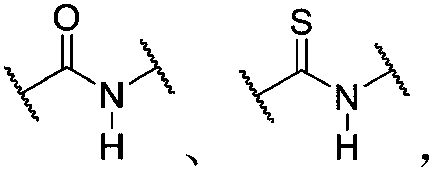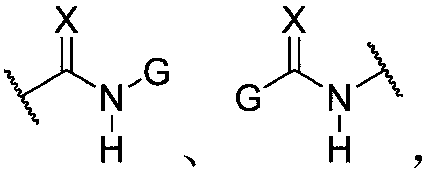Energy absorbing method based on dynamic polymer composition
A technology of polymer and composition, applied in the field of energy absorption, can solve the problems of no longer use, reduced energy absorption capacity and mechanical properties, etc.
- Summary
- Abstract
- Description
- Claims
- Application Information
AI Technical Summary
Problems solved by technology
Method used
Image
Examples
preparation example Construction
[0180] A preferred preparation method of a dynamic polymer composition ionic liquid gel of the present invention includes but is not limited to the following steps: adding each raw material and other raw materials for preparing components A and B of the dynamic polymer composition into the ionic liquid to make The sum of the mass fractions of the prepared dynamic polymer composition components A and B is 0.5-70%, and polymerization, coupling, cross-linking or other types of chemical reactions are carried out by the appropriate means, and after the reaction is completed, the A dynamic polymer composition ionic liquid gel. Another preferred preparation method of the dynamic polymer composition ionic liquid gel of the present invention includes but is not limited to the following steps: swelling the dynamic polymer composition components A, B and other raw materials in ionic liquid or containing In the solvent of the ionic liquid, the sum of the mass fractions of the components A...
Embodiment 1
[0240] Preparation of a dynamic polymer composition based on unsaturated polyester common solid for energy absorption.
[0241] Dissolve 2-chlorocyclohexanone in dichloromethane, add m-chloroperoxybenzoic acid, keep the molar ratio of 2-chlorocyclohexanone and m-chloroperoxybenzoic acid at 10:12, and react to obtain α-chloro-ε - caprolactone 1a. Under anhydrous conditions, dissolve 1 molar equivalent of 1a in toluene, add 1.3 molar equivalents of 1,5-diazabicyclo[4.3.0]non-5-ene, react at 80°C for 16 hours, and dissolve the crude product in water After extraction with hydrochloric acid, a mixture of compounds 1b, 1c is obtained. The mixture was further separated on a silica gel column with dichloromethane as eluent.
[0242]
[0243] Under anhydrous conditions, 120 molar equivalents of ε-caprolactone, 20 molar equivalents of 1a, and 100 molar equivalents of 1c were dissolved in toluene, and in 1 molar equivalent of initiator 2,2-dibutyl-2-tin-1,3- Under the trigger of di...
Embodiment 2
[0248] Preparation of a polyacetylene-based dynamic polymer composition hydrogel for energy absorption in which supramolecular interactions are based on pendant pyrrolidone groups.
[0249] Under nitrogen protection, a certain amount of p-acetylene benzoic acid was dissolved in sodium hydroxide aqueous solution (sodium hydroxide concentration was 10M), keeping the molar ratio of monomer to sodium hydroxide at 2:3. Add catalyst [Rh(cod) at 30°C 2 ] BF 4 aqueous solution, adjust the monomer and catalyst concentrations to 0.5M and 0.0025M, respectively. After 3 hours, the resulting polymer was precipitated in ethanol, dried and dissolved in water again, acidified with hydrochloric acid and centrifuged to obtain poly[(4-carboxyphenyl)acetylene].
[0250] A certain amount of the obtained polymer, 4-hydroxyl-2-pyrrolidone, and butenediol are reacted under the catalysis of dicycloethylcarbodiimide (DCC) and 4-dimethylaminopyridine (DMAP), and the carboxyl, The molar ratio of 4-hyd...
PUM
| Property | Measurement | Unit |
|---|---|---|
| Average molecular weight | aaaaa | aaaaa |
Abstract
Description
Claims
Application Information
 Login to View More
Login to View More - R&D
- Intellectual Property
- Life Sciences
- Materials
- Tech Scout
- Unparalleled Data Quality
- Higher Quality Content
- 60% Fewer Hallucinations
Browse by: Latest US Patents, China's latest patents, Technical Efficacy Thesaurus, Application Domain, Technology Topic, Popular Technical Reports.
© 2025 PatSnap. All rights reserved.Legal|Privacy policy|Modern Slavery Act Transparency Statement|Sitemap|About US| Contact US: help@patsnap.com



